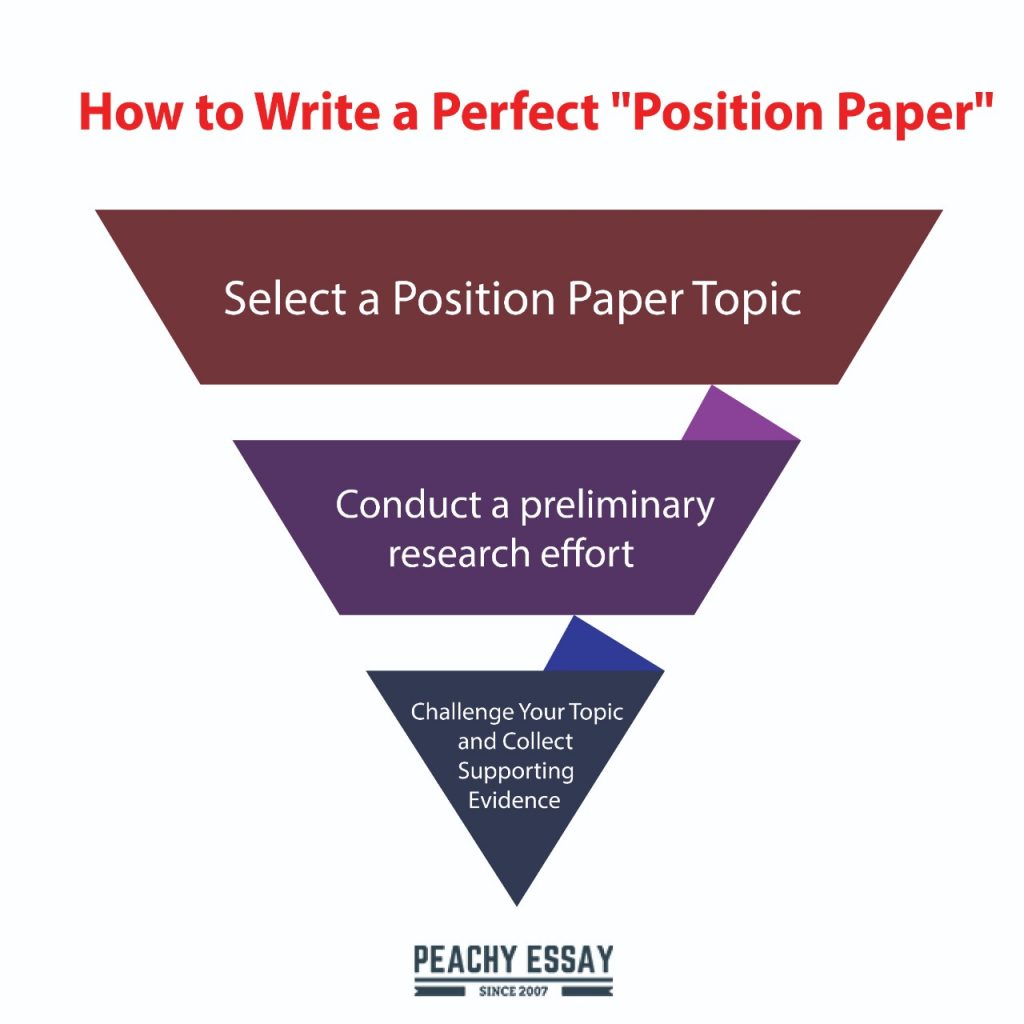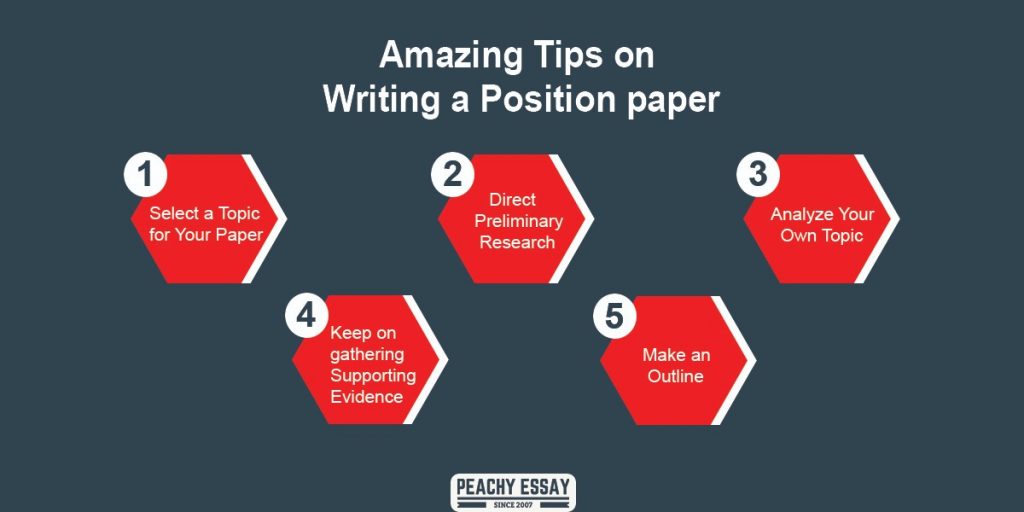Before composing a position paper, it is a great idea to understand how to characterize a position paper. Numerous people confuse a position paper for being a report like any other. In contrast, a position paper involves the author taking the side of the issue being talked about.
While composing a position paper, you need to give your position on the current issue. A position paper can be written in various occurrences, such as in a conversation of worldwide difficulties influencing various countries and the detailing of strategies to control them.
On account of the plan of worldwide strategies, you can even be needed by the individuals from the group to advance your paper even before the group so the bearing of the discussion can be resolved and set at a beginning phase. A position paper can likewise be written on account of establishments’ gatherings while tending to various issues influencing the association.
What Is a Position Paper?
Position papers are regularly utilized in government and other sectors. Nonetheless, the most well-known sort of position paper you might be acquainted with is a basic letter to the supervisor. These writings, contingent upon the status of the paper, may come from laypeople or those with critical expert intrigue and can go about as another type of feedback on revealing what has occurred.
In scholarly circles, position papers are a step-down from double-blind peer-reviewed articles, the specific role of which is to provide an avenue for discovery on topics considered novel, emerging, or ubiquitous at any given time.
Administration, regardless of whether political or corporate, has numerous utilization for position papers. For instance, political bodies, for example, the Model United Nations and the European Union use position papers to make channels of conversation, debate, and to keep a record of opinion on current issues for posterity and policy-making.
You might be acquainted with the terms ‘green paper’ and ‘white paper’. The qualification between them lies in that position papers will as a rule not stretch out to set down solid viewpoints or unequivocal arrangements. White papers will in general have greater unpredictability and weight; green papers are an everyday British adaptation of a white paper.
So, a position paper is a route for associations, people, and different elements to communicate introductory assessments on evolving subjects or news.
What Are The 3 Parts of a Position Paper?
Here are the three parts of a position paper.
-
Introduction
The introduction to the topic requires giving essential background data. To begin with, sketch the huge picture. This should be done in a manner that develops your thesis sentence and which sets out the position you will contend. Try not to introduce the opposing view just yet.
-
Body
The body of the paper is for expanding the topic and your position. Giving further background data to that given in the introduction should start things out. Use facts, statistics, and citations to outline the issue and its criticalness to the reader.
After that, re-express your position and this time use proof and source materials to back up your attestations. With regards to prove, you don’t need to create your own through tests, in spite of the fact that occasions could without much of a stretch emerge if you were an organization associated with the creation of medicines. Consequently, a position paper may likewise go about as a preliminary way to share information presently not in the public domain.
-
Conclusion
While finishing up a position paper, you should end firmly. Restate key points that you feel are generally appropriate and enticing. In the event that it is appropriate, attractive, or conceivable, you could likewise propose how you would resolve the issue. If you are accustomed to composing more inside and out papers or articles, the situating of this may feel fit to the body of the content.
How to Write a Position Paper?
A position paper doesn’t need a lot of research or experimentation. This is due to the ‘position’ part of the format. Positions can change. All things considered, it is fundamental when creating a position paper to have a decent comprehension of the master plan.
Here is how to write a position paper.

-
Select a Position Paper Topic
Picking the correct topic for a position paper requires thought and choice. If writing from a ‘mock’ perspective for an instructive task, it will be a decent test to attempt to take the contrary side of the contention to which you are naturally inclined. Doing so has the solid potential to make your own, all the more prized conviction, more grounded and heartier as you go to considerable lengths to comprehend the epistemological and ontological reason for the contrary side.
-
Conduct a preliminary research effort
With regards to fundamental research, a position paper model on subjects you’re keen on can be a valuable source. Different banks of opinions can be discovered gathered together in newspaper sections this is a good way to find companies or institutions who may have their own authoritative position but lack a central and widespread platform to be heard from. There are probably going to be a wide range of viewpoints gathered in these areas, which makes it significant for conducting opposition research.
-
Challenge Your Topic and Collect Supporting Evidence
To adequately safeguard and declare your contention, you should have the option to address the analysis it goes under. As recommended somewhere else in this guide, newspaper sections give rich ground to find restricting and contrasting positions.
Scouring the web can be helpful when gathering proof; notwithstanding, it is critical to hold a degree of value while picking contentions to deconstruct and proof to support your claims.
Search for reliable sources, such as legislative sites, Google Scholar, academia.edu, and arxiv.org to discover the quality proof.
With regards to testing your situation, there are two ways of thinking. Depending on the setting of your audience, you should conclude which is more powerful. On one hand, you could pick a couple of the main difficulties via cautiously inspecting the underpinnings of the rationale and basically declaring how there is an insufficiency. There is some discussion concerning whether this methodology is pretty much emotionally evocative than the next strategy, which is to go for the amount and list the many glaring mistakes in your rival’s position.
Position Paper Format
-
The thesis
The principal thing that you should major in your paper is the thesis. The thesis statement is the one that will direct the heading of your paper. The thesis statement brings the issue at hand into the limelight and lets the reader know your heading on the contention.
-
The introduction
The introduction is likewise a significant piece of your paper since it will either draw in the reader to your paper or excuse them in the event that it doesn’t look engaging. You should take as much time as necessary in thinking of a decent introduction to pull in the reader to the body.
To accomplish this, you can apply suspense that will make the reader need to investigate more in the body. The suspense will go about as a hook for your reader, if you neglect to stand out enough to be noticed well in the basic part, at that point the person may neglect to peruse the significant points laid out in your body, and the paper would be exhausting. You should climax your introduction with your thesis.
-
The body
In the body, you should have the option to give the two sides of the contention. However, focus more on the position that you are keen on as an essayist. You can give a couple of focuses concerning the counter contention at that point wrap up with abundant focuses and backing for your ideal situation in the contention.
Include enough proof for the body as support for your points. The more you have the support statements, the more you are persuading your audience and consequently, the success of the paper.
You should have the option to comprehend your position formula. Become acquainted with how you will tell the reader that you are for a specific stand and against the other imaginatively. You can even accomplish this by giving the upsides and downsides of your position.
In the planning of the body, you should begin your sections with topic sentences – the topic sentence is a little sentence that acquaints a thought with what will be discussed in the paragraph. Since you will have given each section its thought, at that point the subject sentences should be exceptional for each paragraph.
In planning your paragraph, start with the idea and then back it up with proof. The proof is key as it assists the reader with understanding your points. After each claim, you should accompany evidence and make them as many as you can in light of the fact that they invigorate your thoughts. At this point, you can allude to various statistics and statements just to approve your thoughts and be persuasive.
-
The conclusion
All in all, you should sum up the entirety of your points and give your view on the contention. Toward the beginning of the end, rehash your proposition just to help the reader to remember what your goals were in the paper. Uphold your thesis with a synopsis of the points in the body paragraphs.
You ought to plainly express your position in the closing paragraph. You can likewise go on and excuse the restricting points in a nutshell as a wrap up of your paper. Conclude your paper with a call for usage. Let the reader see the requirement for your paper by the thing you are calling for address.
-
Cite your references
After the conclusion, you should list the reference material utilized in your research simply if the reader needs to affirm something from your points.
-
Edit your work
It is all set through your work in the wake of composing just to ensure that you have composed everything accurately and you haven’t left anything behind. You can undoubtedly recognize straightforward punctuation and spelling mistakes when you go through your paper after writing.
Read more: How to Write an Illustration Essay
Tips on Writing a Position paper
In a position paper task, your duty is to pick a side on a specific subject, some of the time disputable, and develop a case for your assessment or position. You will utilize facts, assessment, statistics, and different types of proof to persuade your reader that your position is the best one. To do this, you’ll gather research for your position paper and compose an outline to make an all-around built contention.
Here are the tips for writing a position paper.

-
Select a Topic for Your Paper
Your position paper revolves around a point that is upheld by research. Your point and position need to hold up when tested, so it’s useful to explore a couple of themes and pick the one you can best contend, regardless of whether it may not mirror your own convictions. Much of the time, the topic and your point are not as significant as your capacity to put forth a solid defense. Your theme can be straightforward or complex, yet your contention should be sound and sensible.
-
Direct Preliminary Research
Preliminary research is important to decide if adequate proof is accessible to back up your position. You would prefer not to get excessively connected to a subject that self-destructs under a test.
Search a couple of trustworthy sites, like education sites and government sites, to discover proficient research and statistics. If you concoct nothing following an hour of looking, or in the event that you find that your position doesn’t stand up to the findings on reputable sites, pick another topic.
-
Analyze Your Own Topic
You should realize the contrary view just as you probably are aware of your own position when you take a position. Set aside the effort to decide all the potential difficulties that you may look at as you uphold your view. Your position paper should address the restricting perspective and work on it with counter-proof. Consider having companions, associates, or family debate the theme with you to get elective perspectives that you probably won’t have promptly viewed yourself. When you discover contentions for the opposite side of your position, you can address them in a reasonable way, and afterward, state why they are not sound.
Another helpful activity is to draw a line down the center of a plain piece of paper and list your points on one side and list contradicting points on the opposite side. Which contention is truly better? In the event that it would appear that your resistance may dwarf you with admirable statements, you ought to rethink your theme or your position on the subject.
-
Keep on gathering Supporting Evidence
Whenever you’ve verified that your position is legitimate and the contrary position is more fragile than your own, you are prepared to stretch out with your exploration. Go to a library and direct an inquiry, or request that the reference administrator help you discover more sources. You can, obviously, lead online research also, yet it’s imperative to realize how to appropriately vet the legitimacy of the sources you use. Ensure that your articles are composed by legitimate sources, and be careful about solitary sources that vary from the standard, as these are regularly subjective instead of factual in nature.
Attempt to gather an assortment of sources, and incorporate both a well-qualified’s assessment specialist and individual experience that can add an enthusiastic appeal to your point. These assertions should uphold your own position but should read uniquely in contrast to your own words. The purpose of these is to add profundity to your contention or offer anecdotal support.
-
Make an Outline
Before you draft your position paper, make an outline to guide you through the writing process. In the outline, highlight the content of the introduction, body, and conclusion.


